 At a time when having multiple income streams is vital for restaurant brands, catering services can be an important contributor to the bottom line. Last year, business-to-business catering sales rebounded to 2019 levels, according to remarks by Jim Rand, founder of CaterStrat, at an education session at the recent National Restaurant Association Show. What’s more, he said segment leaders such as Panera and Olive Garden don’t command a majority of overall catering sales, so there is ample room for smaller brands to carve out their own niches in catering for consumers and events. Now that COVID-19 seems to be receding into the distance, consumers and organizations are looking for opportunities to gather with friends and staff again. Fine-tuning your catering capabilities now can help you take advantage of summer sales and also give you some momentum to capture catering orders leading into the holiday season. As a recent Restaurant Dive report advises, developing business in this area requires many of the same approaches operators use to strengthen other parts of restaurant sales right now: ensuring orders are accurate, consistent and quick. (This is especially true for corporate catering, for which a restaurant generally doesn’t have more than one or two chances to recover after an error with an order.) Having a catering-specific ordering platform can help support these customers, along with a marketing strategy to spread the word about your brand and its catered offerings. 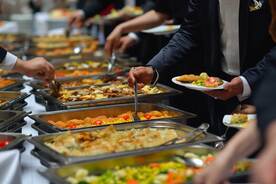 When the economy is struggling or feels uncertain, marketing budgets can take a hit as business owners tighten their belts. Still, it continues to be important to get the word out about your restaurant – even if you don’t have the budget you’d like at the moment. It may help to look at your existing streams of income and focus on building up those that are inherently helpful in marketing your restaurant. Catering is one likely possibility. It can be a valuable tool for growing brand awareness – all while allowing a restaurant to maximize efficiencies when it comes to inventory and staffing. Rob McColgan, CEO of Modern Restaurant Concepts, said in a recent interview with Modern Restaurant Management that he sees catering as an essential marketing component that helps drive the overall success of his restaurant’s brands. It can open doors for a restaurant trying to gain traction in new markets, as well as allow a business to access new pockets of guests at scale. Even though business catering may not be back to pre-pandemic levels, this simply means there are other potential opportunities restaurants can now tap into for group business. Consider the social gatherings happening in your community – book clubs, community service meetings and school-related gatherings, to name a few. These outlets can serve as free marketing opportunities that organically drive interest and help spread the word about your business.  The prospect of a looming recession, along with rising prices on everything from food to fuel, have started to impact how consumers spend – and what budget items they feel they need to adjust to live within their means. While this means people are restricting their spending when it comes to buying takeout food, meals away from home, and travels to far-flung destinations, it also means they are looking to have memorable experiences with friends and family a bit closer to home this year. That’s where there is opportunity for restaurants to fill the gap. Take some cues from Hauste, a new company inspired by meal delivery boxes and motivated by the pandemic-era desire to bring restaurant meals home. As reported by Eater, Hauste develops downloadable dinner party guides – priced at $16 or $26 depending on the size of the gathering – that include a shopping list, menu, recipes, music playlist, design inspiration, checklists, and in some cases, templates for name cards or invitations. What’s more, the guides help the host get organized by breaking tasks down into the days and minutes leading up to an event. If you are a restaurant that prides itself on the in-person experience offered to guests, how can you repackage it as the “staycation” version of that experience? By making it easier for your customers to host a polished, low-stress gathering, you’re also creating opportunities for them to promote you on social media. Socializing and entertainment are still happening right now – and consumers are eager to connect. How can you find new ways to help them gather and celebrate in ways that feel like a great value and can therefore find a place in their budget? 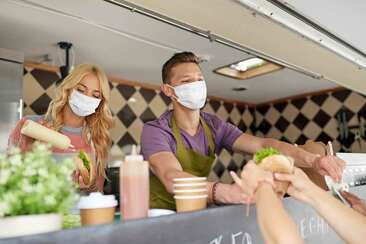 New research from Credit Suisse found that limited-service chains are charging an average of 20 percent more for third-party delivery. At a time when restaurant operators are especially cognisant of the limits of what consumers are willing to spend, that figure could well be over the line. While it’s no surprise that delivery costs would surge amid steeply increasing costs for gasoline, along with other items needed to run a business, it means restaurant operators will, yet again, need to be creative about getting food to consumers. After all, the same surging fuel costs that are increasing delivery prices could also keep consumers off the roads. Is there an area of your business that might help you better manage rising costs – or make an off-premise meal more worthwhile? This is all happening at a time when people are especially eager to gather – and are finally feeling a bit safer in doing that – so could you focus on catering for offices that are bringing their employees back together more regularly, or for weekend picnics now that the weather is getting nicer? Could you participate in food festivals or bring a food truck to office parks or city centers where you have a steady stream of traffic on foot? Could you organize a single drop-off of food orders for companies with large numbers of employees onsite? Consumers are still eager to have restaurant food. The economic situation being exacerbated by the war in Ukraine just means restaurant operators will have to use their ability (well-honed during the pandemic) to quickly adapt to new challenges. Among the many aspects of life that are evolving because of the pandemic is residential real estate – perspectives are changing about the best places to live and people are looking for their living environments to fill a wider variety of needs. While flight from urban areas might not be as pronounced as media reports might have you believe, according to a Barclays Capital report on commercial real estate, urban developers are still feeling the need to redesign communities to attract and retain residents in creative ways: Think multifunctional spaces that allow people to live, work, socialize, work out and eat without leaving the complex. As a result, these developments are becoming a growth area for ghost kitchens. The Spoon reports that the virtual restaurant network C3 has partnered with an apartment developer to serve up meals for delivery, as well as for onsite service in bars and pool areas at communities in Phoenix and Nashville, with other cities being added soon. If your restaurant is looking for a new niche, consider making a pitch to self-contained living environments – from extended-stay hotels to apartment complexes to senior living condominium communities. These facilities may not only have the kitchen space your business needs but also the concentrated demand for food that feels special.
Some aspects of restaurant dining have seemed to become ancient history in the pandemic era. Case in point: It’s hard to imagine when the salad bar or buffet line will make a widespread comeback. But the equipment that made those kinds of services possible remains. So, like so many other areas of restaurant service right now, it’s time to reinvent it. Campbell’s has done just that by updating its self-service soup stations: In the current environment, they suggest placing a warming plate over soup wells and then lining up pre-packaged containers of soup for customers to collect, or (as a space-saving solution that also accommodates longer hold times) using a multi-tiered warming cabinet that can also be placed over existing soup wells and holds containers of soup to-go in various sizes. Both options enable easy soup collection by customers. They also allow easy replenishment of product from the back of the house – either by filling the cabinet with additional pre-poured containers of soup stored in a larger enclosed warming cabinet in the back, or by pouring more servings as needed from tureens behind the counter and adding them to the containers awaiting collection by customers. These new solutions from Campbell’s weave in some other benefits related to food safety, waste management and customer satisfaction too. Each soup container can be sealed with a sticker to boost customer confidence in the security of the soup they are about to consume. Further, the containers allow for precise pouring of soup in various sizes to help prevent accidental overpouring. Finally, serving from pre-portioned containers allows you to offer size options beyond the traditional two. Selling a few size options not only appeals to customers, but it can also help you craft new combo promotions to elevate check totals. Check out Foodservice CEO to find out about all the Cambpell’s self serve solutions at https://www.foodserviceceo.com/self-serve-solutions.html
No doubt, the past year has been more difficult for restaurants than we care to think about. But the turning of foodservice on its head hasn’t been completely bad. In fact, it has opened some doors – particularly for nimble, entrepreneurial operators who have a knack for posting enticing food photos on social media and the ability to use tech to set up ordering and delivery. As the New York Times reported recently, there has been an explosion of inventive take-out food concepts on Instagram lately as foodservice operators have begun promoting small, rotating, deliverable menus on the platform – and with success. Some of these concepts are based on ideas that chefs have dreamed of trying for some time, but others are simply a temporary means of keeping money flowing in to pay employees, cover rent and essentially stay in business in some form until the pandemic winds down. Some chefs are even working out of simple home kitchens. Whether you’re in the position to try pop-up concepts like this or not, they are evidence of the newly stripped-down list of resources a restaurant truly needs to function, which are important to remember for the long term. Operating a restaurant is no longer about real estate but about being able to reach your customers where they are – and using the range of tools at your disposal to help. First, focus on making it easy and fast for customers to order from you online. Think about how you can profitably get food to customers – whether by aligning with a third-party vendor, offering a scheduled weekly drop-off of food (ready to eat right away or freeze), or even just making curbside pickup more appealing. Mix up your menu and promote the changes online – when you rotate new items through on a regular basis, you give your customers a reason to look for your updates each week and you naturally create new reasons to post those updates on your social media, website and email newsletter. Finally, take food photos that sing. You can do this on your mobile phone – just opt for warm, natural light, use a reflector or simply a light piece of paper to soften shadows, use color and contrast to make the food pop in the image, and add some simple decorative (or brand-specific) elements to elevate viewers’ perceived experience of eating your food.
Restaurant operators are natural creatives, but who would have thought that the past year would have required so much creativity – less for planning special events and more for just figuring out how to keep business afloat? The past year has hit caterers especially hard – and required near-constant reinvention across the hospitality sector. As we emerge from the pandemic, it’s likely that restaurant operators will continue to need new operating models and diverse streams of income to fortify themselves going forward. How can you make your business as nimble and adaptable as possible for the long haul? It might involve converting or scaling down your existing real estate for new purposes. Perhaps you can convert your food truck into a door-to-door meal delivery service. Or your former events business into a smaller specialty meal-and-dessert service for virtual meetups. Have a team with big personality and ideas? Create a series of YouTube videos that feature them showing viewers how to throw a festive dinner party at home – and offer a corresponding dinner-and-wine kit available for purchase. Becoming a more nimble operation may involve simply adopting technology to help fine-tune your inventory management, minimize waste and manage labor. Returning to business as usual shouldn’t be a long-term plan for any restaurant business, so what incremental changes can your business make this year to create new revenue streams and cushion against future challenges?
This year, consumers and restaurants alike could really use the morale boost that holiday gatherings and celebrations can offer – but those events will look a lot different this year (if they happen at all). But not so fast. Could you find a festive way to help people enjoy great company, food and drink in a new way? Could you still help them toast to a long-awaited 2021? Think about how you can bring the party to your guests individually or virtually. Are there businesses in your neighborhood who have always held their holiday lunches and happy hours with you but will miss them this year because their employees are working remotely right now? More than ever, they want to make their employees feel appreciated and connected to their work from afar, so promote some holiday bundles that can be delivered to individual employees as a special treat. Do your customers still feel the need for a party – even if it’s not a traditional one? If you don’t have access to a large outdoor space where you are allowed to plan a socially distanced gathering, don’t underestimate the appeal of a virtual party, cooking class, quiz night or wine tasting held via Zoom. It can come together with a menu of festive food, cocktails and party bags for delivery, a few festive or funny Zoom backgrounds and some music.
By now, you likely know the approved COVID-recovery playbook for restaurants: Fine-tune your off-premise menu, offer digital ordering, make your pick-ups low-touch, etc. But restaurants aren’t all alike – thankfully – so a cookie-cutter approach to COVID survival and success isn’t going to work for everyone. If this sounds like you, what could work for you? What might inject your business with enough lifeblood to keep it going until spring, when the environment may look a whole lot better for restaurants? A recent New York Times report profiled the Brooklyn restaurant Gertie, which serves updated Jewish-American deli food and has embraced reinvention mode. When the pandemic hit, the restaurant had no takeout or delivery operation – the one thing believed to be a must for operating in these times. So the owners created one. Far from being a saving grace, it was a “dead end.” So instead, the restaurant has focused on nonprofit work – partnering with a range of meal programs around the city that distribute meals to the hungry. Prior to the election, they planned a weekly event designed to boost business while encouraging support for candidates running for office. So far, it’s keeping them going, and they continue to look for ways to reinvent themselves. The environment for restaurants is severe – but money is still flowing in this economy. What organizations in your community could be critical partners for you right now? What causes might inspire your best customers to support you? This isn’t what you’ll be doing forever but it may help carry you through these next few months to a point next year when life feels a bit safer, people want to get out and support restaurants, and yours will be among the ones there to serve them.
|
Subscribe to our newsletterArchives
April 2024
Categories
All
|


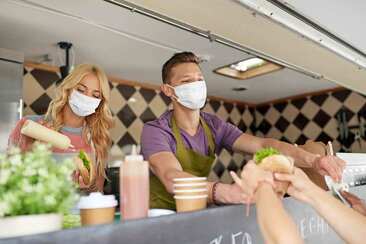


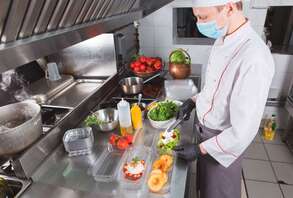

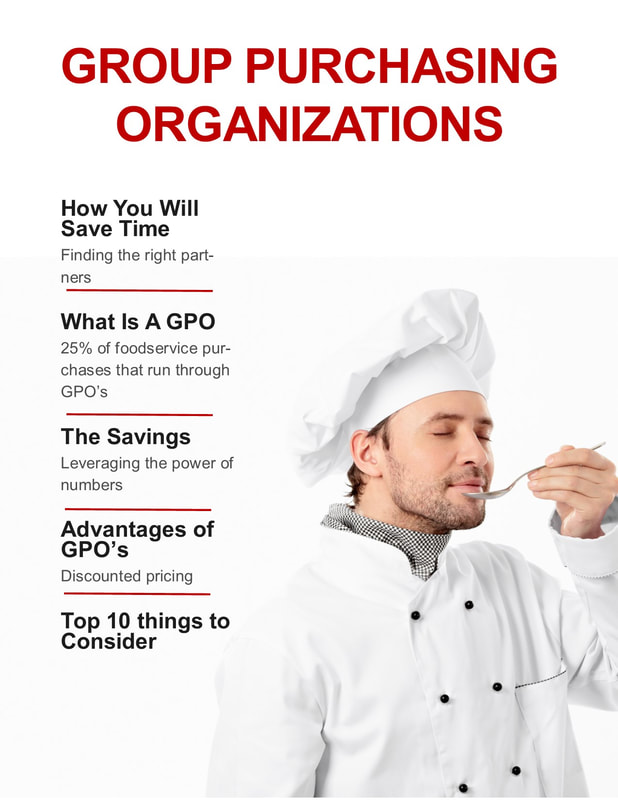

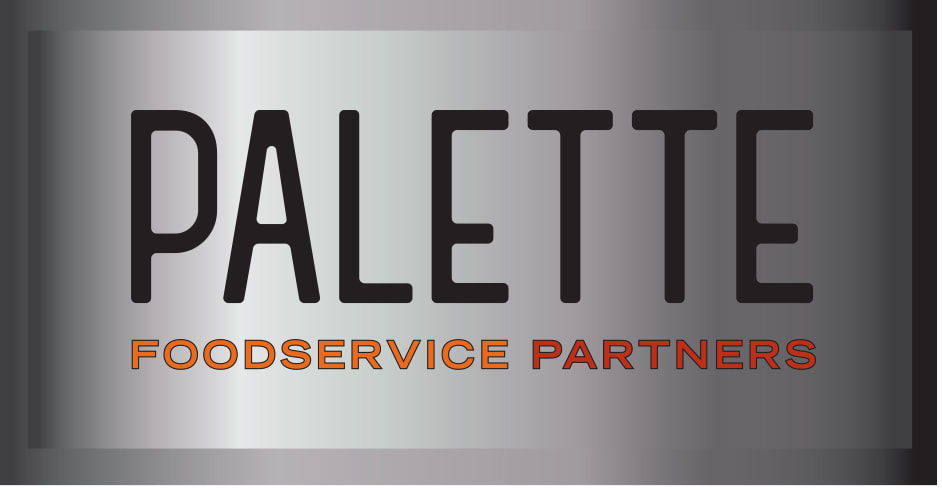
 RSS Feed
RSS Feed